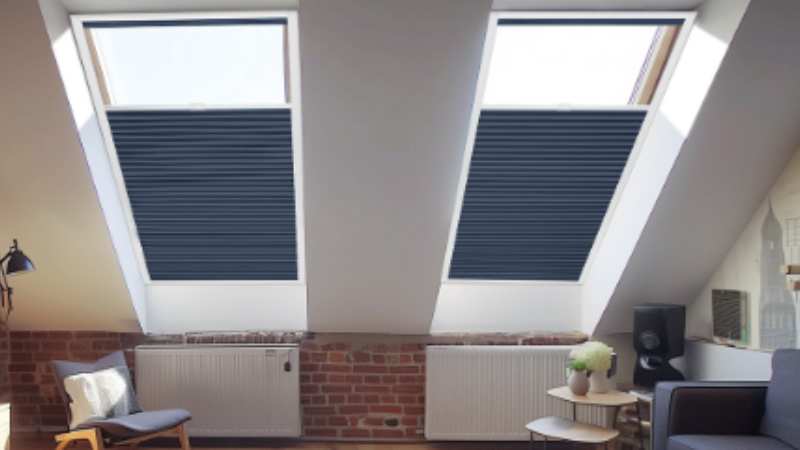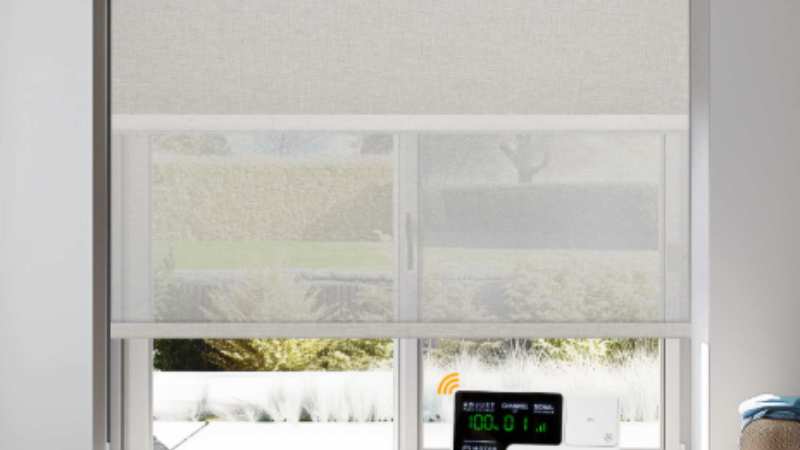In the world of interior design, technology is changing the way we live and decorate our homes. One of the most exciting inventions in recent years is smart blinds, window coverings that can automatically adjust themselves to suit your lifestyle. These blinds use Artificial Intelligence (AI) to learn your habits, understand your preferences, and create a comfortable and energy-efficient environment.
In this blog, we’ll explore how AI plays a key role in smart blinds, how these systems learn your light preferences, and why they’re becoming an important part of modern interior design.
What Are Smart Blinds?
Smart blinds are window blinds or shades that can be controlled automatically through a smartphone app, remote control, or even voice commands. They are connected to your home’s smart system and can be programmed to open or close at certain times of the day.
But the real magic happens when AI gets involved. With artificial intelligence, smart blinds can actually learn about your lifestyle and adapt to your preferences without you having to control them all the time.
For example, blackout motorized window shades are perfect for bedrooms or media rooms because their thick fabric blocks out almost all sunlight, helping you sleep better and protecting your furniture from sun damage. Motorized Cellular Shades are designed with honeycomb-shaped cells that trap air, providing excellent insulation and helping maintain a comfortable room temperature while also allowing easy control of light and privacy. Both types make daily life easier and add a modern, high-tech touch to your home.
How AI Helps Smart Blinds Learn Your Light Preferences
AI is like the brain of the smart blinds. It gathers information, studies patterns, and then makes decisions based on what it has learned. Here’s how it works step by step:
1. Collecting Data
The smart blinds collect data through sensors and connected devices. They measure:
- The amount of sunlight entering the room
- The temperature inside and outside
- The time of day
- Your manual adjustments (when you open or close the blinds)
Every time you interact with the blinds, that action becomes part of the data. For example, if you always open the blinds at 7 AM, the system will take note of that pattern.
2. Learning Patterns
Using AI algorithms, the blinds begin to understand your daily routine. They might learn that:
- You like morning sunlight in the kitchen while having breakfast.
- You prefer your bedroom dark until 8 AM.
- You usually close the living room blinds at sunset to keep privacy.
Over days or weeks, the system gets smarter. It doesn’t just copy your actions, it starts predicting what you will want next based on your habits.
3. Adapting Automatically
Once the smart blinds have learned your preferences, they start working on their own. They open, close, or tilt the slats automatically to give you the right balance of light and shade.
For example:
- On a sunny afternoon, they may lower halfway to reduce glare.
- On a cloudy morning, they might open wider to brighten the room.
- In the evening, they can close completely to help you relax or sleep better.
This automatic adjustment creates a perfect atmosphere without you needing to lift a finger.
The Benefits of AI-Powered Smart Blinds
Smart blinds are not just a luxury item; they offer many practical advantages that make life easier and more comfortable.

1. Comfort and Convenience
Imagine waking up to gentle sunlight that helps you start your day naturally, or watching a movie without annoying glare from the window, all without having to adjust anything yourself. Smart blinds make this possible. They take care of lighting so you can focus on enjoying your home.
2. Energy Efficiency
AI-powered blinds help control indoor temperature. During hot days, they can close automatically to block the sun and keep your home cool. In winter, they can open to let in sunlight and warm up your room naturally.
This means less need for air conditioning or heating, helping you save energy and reduce electricity bills.
3. Better Sleep and Health
Light plays a big role in our body’s natural rhythm. By managing light levels according to your routine, smart blinds can help you sleep better and wake up more refreshed. They can also reduce eye strain by minimizing glare and providing a balanced level of light throughout the day.
4. Improved Home Security
Smart blinds can also improve your home’s security. When you’re away, they can open and close at different times, making it look like someone is home. This simple trick can discourage intruders and give you peace of mind.
5. Stylish and Modern Design
From an interior design perspective, smart blinds bring a modern, sleek look to your home. They fit perfectly into minimalist, contemporary, or even traditional designs. Many come in different colors, materials, and styles, allowing you to match them with your furniture and décor.
Integration with Smart Home Systems
Smart blinds work best when connected to other smart home devices. For example:
- Smart speakers like Alexa or Google Home let you control blinds with your voice.
- Smart thermostats can work with blinds to balance temperature.
- Smart lighting can coordinate with blinds to adjust brightness for reading, working, or relaxing.
All these systems work together to create a truly intelligent home where technology responds to your needs seamlessly.
The Role of AI in Future Interior Design
AI is changing interior design in many ways, and smart blinds are just the beginning. Designers are now thinking about how technology can make spaces more responsive and human-centered. Instead of static rooms, we are moving toward adaptive environments that change with us.
Imagine:
- Windows that adjust tint automatically depending on the weather.
- Lights that shift color temperature throughout the day to match natural sunlight.
- Furniture that changes shape or position based on your activity.
All of these are becoming possible with the help of AI and data-driven design.
Challenges and Considerations
Of course, there are a few challenges to think about before installing smart blinds.
- Cost: Smart blinds are still more expensive than regular blinds. However, as technology becomes more common, prices are slowly coming down.
- Privacy: Since AI systems collect data, it’s important to choose trusted brands that protect your information.
- Internet Dependence: Smart blinds often need Wi-Fi to function properly. If your internet is unstable, they might not work perfectly.
Despite these challenges, most users find that the comfort, style, and savings outweigh the downsides.
Final Thoughts
AI-powered smart blinds are an excellent example of how technology and design can work together to improve our daily lives. They bring convenience, comfort, energy efficiency, and style, all while learning your personal preferences.
As AI continues to develop, we can expect even smarter and more creative home solutions. Interior design is no longer just about how things look, it’s also about how spaces feel and respond to us.
So, the next time you think about upgrading your home, consider adding smart blinds. They don’t just make your home look modern; they make it live with you.

